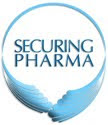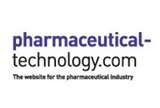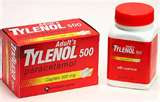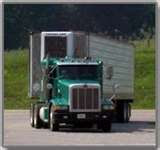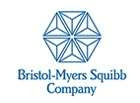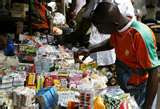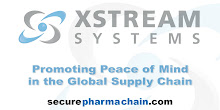
Simeon Bennett in the July 8th BusinessWeek, writes about Pfizer going after the financial spoils of convicted counterfeiters.
Overall this is an excellent encapsulation of a new tactic of Big Pharma of attacking counterfeiters financially while detailing with excellent statistics and examples of the overall danger of this issue.
Initially, the story details the case of Martin Hickman, who made a fortune and is now one of the first successes of Pfizer’s new strategy.
Hickman between 2003 and 2007 sold more that $8.9 million of bogus Viagra and other drugs via 150 websites according to Britain’s MHRA.
Hickman used the proceeds of his counterfeiting business to by a high end flat in Chelsea, a villa in Spain, Bentley, Range Rover and hundreds of thousands of dollars of jewelry.
According to Pfizer when Hickman was finally caught in 2007 for his illegal activities he was sentenced to only 3 months in jail for contempt of court and ordered to stop advertising Viagra on his websites. This lax penalty forced Pfizer to employ other tactics to fight counterfeiters.
Highlights from the BusinessWeek piece on Hickman and the Pfizer strategy are:
• “The point is to make them realize that there’s no sense from a business perspective in counterfeiting our products, because if we find you, we’re taking your money away,” says John P. Clark, a 55-year-old U.S. law enforcement veteran who now serves as New York-based Pfizer’s chief security officer.
• The spoils of Hickman’s crimes helped settle a trademark infringement lawsuit brought by the world’s largest drugmaker three years ago. It’s the biggest example of a new approach Pfizer is taking to fight counterfeiting of prescription drugs, an industry that’s almost doubled to $75 billion over five years, according to the New York-based Center for Medicine in the Public Interest.
• Pfizer, whose erectile dysfunction pill Viagra is one of the most copied medicines, once relied on local authorities and criminal courts to hunt down offenders. Now it’s taken matters into its own hands, hiring former U.S. customs officials, FBI agents, Turkish narcotics experts and Hong Kong police to hunt counterfeiters. In China, they’re tracking fakes to the source, raiding derelict warehouses for evidence of illegal drug-making. In the U.K., they’re using civil courts to hit fake pill peddlers where it hurts most.
• Previously, the company would refer cases of counterfeiting to regulators and police for criminal prosecution. Civil suits allow Pfizer to conduct investigations and raids itself with a judge’s authorization, according to Clark.
• In a second criminal prosecution in June last year, Hickman pleaded guilty to six counts of selling and supplying fake and unlicensed medicines and money laundering, and was sentenced to two years’ jail, according to the MHRA. The regulator is now taking legal action to seize his assets, William Mach, a spokesman for the MHRA, said in an e-mail.
As it relates to the industry and the scope of the issue, Mr. Bennett’s piece includes:
• Pfizer isn’t alone in taking civil action. Eli Lilly & Co., the maker of the impotence drug Cialis, investigates phony pill makers with Pfizer because their products are often copied together, said Bruce Longbottom, legal counsel for Indianapolis- based Lilly.
• “The civil action gives the financial deterrent where they’re actually hit in the pocket book,” Longbottom said in a telephone interview. “We do think that sends a message that’s a little bit different from what a criminal action might give us.”
• International criminal syndicates are increasingly turning to prescription drugs because they offer higher returns and lower risks than narcotics, according to Aline Plancon, an Interpol officer who works with police worldwide to investigate counterfeiters.
• “These people mastered the technology of making pills, because they are doing narcotics,” she said. “They know that the risks of being punished are low compared to the benefit.” Plancon estimates that $1,000 spent making heroin can earn a return of $20,000. The same investment in copied medicines can earn as much as $450,000.
• The global trade in counterfeit drugs will rise to $90 billion by 2015, according to the Center for Medicine in the Public Interest. The Organization for Economic Cooperation and Development says it’s hard to put a value on the problem because of “a paucity of reliable data.” Trade in all counterfeit and pirated goods rose to about $250 billion in 2007 from about $200 billion in 2005, the OECD estimated in November.
• There were 2,003 discoveries of counterfeit, illegally diverted or stolen medicines worldwide last year, compared with 195 reported in 2002, according to the Pharmaceutical Security Institute, a Vienna, Virginia-based nonprofit organization that monitors fake medicines.
Bennett's backgrond on the human toll of counterfeiting include:
• Counterfeits take a toll on human life. Fake medicines against malaria and tuberculosis alone are responsible for about 700,000 deaths a year, the London-based International Policy Network estimated in a report last year.
• “A mother who buys fake medicine to treat malaria does not know that she is paying for her own death or that of her sick child,” Jacques Chirac, a former president of France, said in a speech to the World Customs Organization’s council on June 24. Chirac’s charitable foundation is working to combat fake drugs.
• In the U.K., Pfizer says its civil suits have reduced the availability of fake drugs over the Internet. The drugmaker says it has sued at least seven other counterfeiters there, and last month settled its first civil suit in the U.S.
• “Even if you have a few bucks, we’re going to take it,” Clark says. “It’s not going to be there in the Caymans, so you can’t turn around and just tap your bank account and start the operation over again.”
Secure Pharma Chain Blog is excited about Pfizer’s and Pharma's new strategy to go after the proceeds of this criminal act and encourages all members of the supply chain to take further proactive steps including the deployment of anti-counterfeiting technologies to interdict this deadly threat before it reaches consumers.
To read the entire BusinessWeek article, visit: http://www.businessweek.com/news/2010-07-08/pfizer-spies-find-spanish-villa-gold-rolex-in-fake-viagra-bust.html.


